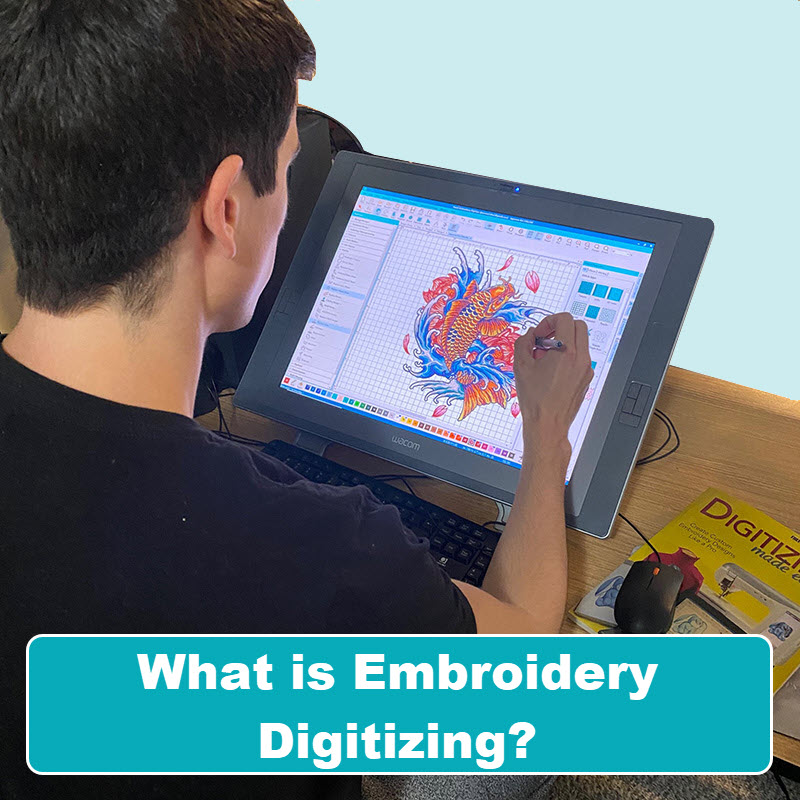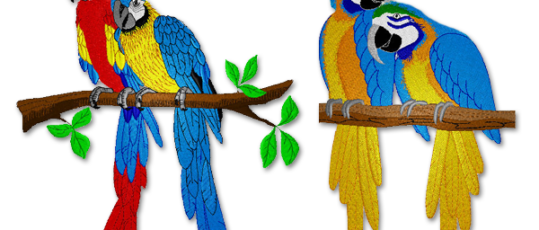Expert Digitizing for Embroidery: High-Quality Layouts
Expert Digitizing for Embroidery: High-Quality Layouts
Blog Article
Streamlining the Art of Embroidery Digitizing: Step-by-Step Guide
Needlework digitizing is a careful craft that requires accuracy and imagination. As innovation remains to advance, the digitization procedure has ended up being much more available, enabling enthusiasts to bring their detailed styles to life easily. In this guide, we will certainly unwind the complexities of needlework digitizing, breaking down each step carefully to enhance the process and equip both novices and seasoned embroiderers alike. Keep tuned to find how you can streamline this elaborate art form and change your imaginative visions into beautifully stitched masterpieces.
Understanding Embroidery Digitizing Software Program
Embroidery digitizing software application works as a critical tool for changing intricate layouts into digital styles suitable with embroidery makers, helping with specific sewing and customization. This customized software enables customers to import numerous picture documents styles, such as JPG or PNG, and transform them right into needlework machine-readable layouts like DST, EXP, or PES - Digitizing for Embroidery. By utilizing features like stitch editing, underlay choices, and thread color choice, digitizing software program makes it possible for customers to manage every element of the layout procedure
Moreover, advanced embroidery digitizing software program supplies devices for developing intricate layouts, readjusting stitch density, and including detailed information. Customers can additionally sneak peek the layout prior to sewing it out, making certain accuracy and reducing mistakes. Additionally, several software application programs provide automatic attributes that aid streamline the digitizing process, saving time and effort.
Understanding the capabilities of embroidery digitizing software is necessary for achieving high-grade cause needlework jobs. By grasping this device, embroidery fanatics and professionals can unleash their creativity and bring intricate designs to life with precision and efficiency.

Selecting the Right Layout File
After acquainting on your own with the capacities of embroidery digitizing software application, the following crucial action in the procedure is picking the ideal style file for your project. Digitizing for Embroidery. When selecting a design file for needlework digitizing, it's crucial to take into consideration the intricacy of the design, the size of the last item, and the kind of fabric you will be functioning with
For intricate layouts with fine details, a high-resolution image or vector documents is suggested to guarantee that the embroidery equipment can precisely reproduce the layout. In addition, the size of the final item plays a substantial function in selecting the appropriate style documents. Bigger layouts might call for greater resolution data to maintain quality and sharpness.
Furthermore, the kind of fabric you will be stitching on influences the option of style documents. Various fabrics might require modifications in the layout file to make sure that the stitches are properly lined up and the layout looks like planned. By thoroughly choosing the appropriate design file based upon these factors, you can set on your own up for an effective needlework digitizing process.
Digitizing Tools and Methods
Making use of specialized software and precision strategies, digitizing tools are crucial in transforming elaborate styles right into embroidery-ready documents. Embroidery digitizing software application, such as Wilcom, Hatch, or Embrilliance, supplies the essential system to transform art work right into stitch information. These programs supply features like stitch modifying, rug options, and lettering tools to ensure the design translates effortlessly onto fabric.
Among the vital strategies in digitizing is creating a clear path for the embroidery machine to follow. This involves digitizing each component of the layout with precision, determining stitch kinds, thickness, and instructions. By utilizing tools like digitizing tablets or software-specific plugins, embroiderers can achieve a high level of precision in their digitized styles.
Moreover, grasping the art of rug stitching is important for creating quality needlework. Underlay sewing supports the material and develops a structure for the layout, making certain hop over to these guys that the end product is both visually attractive and durable. By understanding these digitizing tools and methods, embroiderers can elevate their craft and bring detailed styles to life with precision and performance.
Personalizing Stitch Types and Instructions
Having established a foundation in digitizing devices and methods, an important aspect beforehand needlework workmanship depends on tailoring stitch types and instructions with precision and objective. The choice of stitch kinds can substantially impact the overall look and texture of the stitched layout. Satin stitches, understood for their smooth and glossy surface, job well for producing boundaries and message. On the various other hand, fill stitches are perfect for covering bigger areas successfully. By strategically integrating these stitch kinds, embroiderers can accomplish deepness and dimension in their layouts.
In addition, the direction of stitches plays a critical function in enhancing the visual allure of the final embroidery. Numerous stitch instructions can add structure, emphasize details components, and produce visual rate of interest. For example, transforming the angle of stitches can imitate motion or all-natural patterns like fur or feathers. By try out different stitch angles and patterns, embroiderers can bring their designs to life with amazing information and details. Mastering the from this source art of customizing stitch types and directions equips embroiderers to unleash their imagination and boost the quality of their job.
Testing and Refining Your Digitized Design
To ensure the precision and top quality of your digitized layout, comprehensive testing and refinement are important steps in the embroidery digitizing procedure. As soon as you have actually finished the digitization of your style, it is important to examine it prior to waging the actual embroidery. Testing permits you to recognize any type of prospective problems such as string breaks, stitch density problems, or design distortions that might influence the last outcome.

After testing, it is very important to fine-tune your digitized style based on the feedback from the examination sew-out. This might include tweaking stitch setups, readjusting thickness, or making adjustments to the total design to attain the wanted result. By iterating through testing and refinement, you can adjust your digitized style to perfection prior to progressing with the actual embroidery process.
Conclusion
Finally, grasping the art of needlework digitizing needs a detailed understanding of the software, picking the right design documents, utilizing digitizing devices and techniques, tailoring stitch types and instructions, and screening and fine-tuning the digitized design. By complying with these actions, embroiderers can streamline the digitizing procedure and produce high-quality stitched designs with accuracy and effectiveness.
Report this page